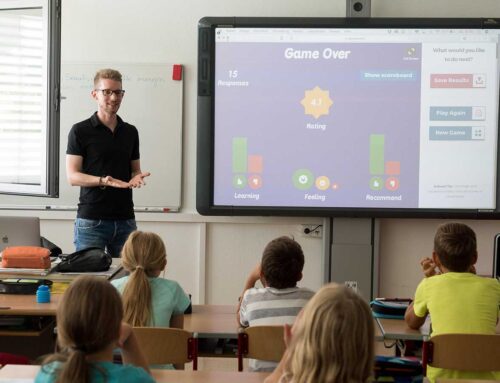As the educational landscape continues to evolve, hybrid learning has become more than a temporary solution—it’s a long-term strategy for delivering flexible, engaging education. For schools considering or currently implementing a hybrid model, preparation and technology selection are critical to success.
What is hybrid learning? It’s a model where part of the instruction happens in person, and part takes place online. Done well, hybrid learning provides students with autonomy, supports diverse learning needs, and expands access to high-quality instruction.
But launching hybrid learning isn’t as simple as putting a few videos online. It requires a thoughtful balance of pedagogy, digital tools, infrastructure, and teacher support.
Start with strategy. Define your learning goals and how hybrid instruction will meet them. Are you trying to improve engagement? Support students who can’t be physically present? Offer more personalization? Clear objectives will guide every decision.
Infrastructure matters. Ensure all students have reliable access to devices and internet, both at school and at home. Invest in a stable learning management system (LMS) that supports assignments, communication, and progress tracking—platforms like Google Classroom, Moodle, or Canvas are commonly used.
Choose the right tools. Video conferencing (Zoom, Microsoft Teams), collaborative platforms (Padlet, Jamboard), and assessment tools (Kahoot!, Formative, Edpuzzle) are essential components of a successful hybrid ecosystem. Look for integrations and user-friendly interfaces.
Train your teachers. Professional development is key. Teachers need support not only with using tools but also with designing hybrid-friendly lessons that balance asynchronous and synchronous components. Short, ongoing training sessions—what we call microlearning—can be especially effective.
Don’t overlook student support. Create clear routines and expectations. Offer tech support and guidance on digital citizenship. Empower students to manage their own learning with tools like planners, checklists, and self-paced modules.
Evaluate and adapt. Gather feedback regularly from students, teachers, and families. Use it to refine your model, improve equity, and eliminate tech barriers. What works for one school might not work for another, so stay flexible.
Hybrid learning is not about replacing teachers or simplifying education—it’s about expanding what’s possible. With the right approach, schools can create a learning environment that’s resilient, student-centered, and future-ready.
At Maxter Board, we help schools build smarter digital infrastructures and implement technology that works. Whether you’re just beginning or looking to improve your hybrid learning model, we’re here to help.






